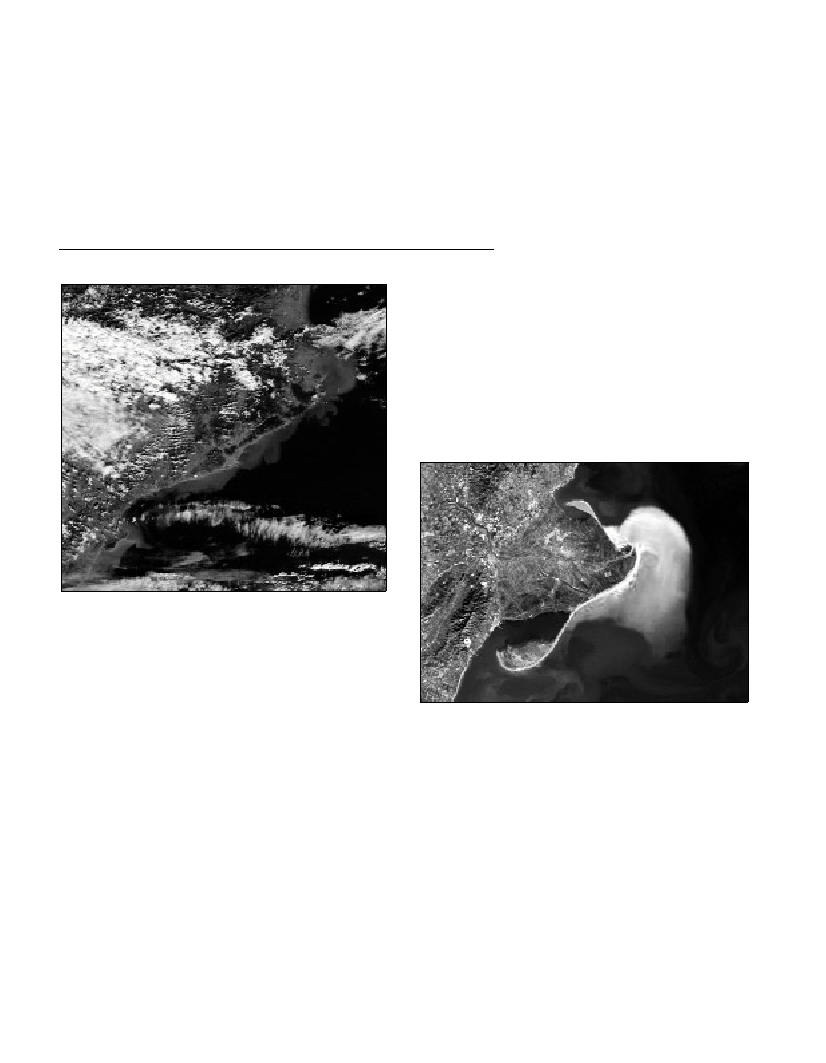MESOSCALE CIRCULATION CONTROL ON RIVER PLUME DISPERSAL OFFSHORE CATALONIA,
NW MEDITERRANEAN SEA
Pedro Arnau* and Miquel Canals
GRC Geociències Marines, Universitat de Barcelona, Martí i Franquès s/n, E-08028 Barcelona, Spain
* antarnau@natura.geo.ub.es
Abstract
AVHRR, SeaWiFS, MODIS and ASTER satellite images collected during the last ten years have been examined to investigate the
mesoscale circulation control on coastal currents and their in?uence over ?uvial plume dispersal. The study focused on the Northwestern
Mediterranean Sea, and the Catalan Margin in particular. The observed seasonal patterns have been compiled into a Geographical
Information System which is inclusive of watershed properties, fine sediment sinks and interactions with coastal infrastructures.
Keywords: Satellite imagery, mesoscale, circulation, plume dispersal, Catalan margin.
Rapp. Comm. int. Mer Médit., 37,2004
5
Fig.1. Coalescing plumes along the Catalan coast, October 2003.
The study are included the Ebro shelf and the Catalan continental
shelf north of the Ebro delta. The Ebro river basin is the largest
(85362km
2
) of the Iberian Peninsula draining into the Mediterranean
Sea. Rivers to the north are much shorter and carry much less water
and sediment load. While the Ebro river receives tributaries from the
western and central Pyrenees and the Iberian Massif, the rivers to the
north originate either in the eastern Pyrenees or in the shoreline-
parallel Catalan Coastal Ranges. The marine area offshore Catalonia
is dominated by the permanent mesoscale Liguro Provençal Current
(LPC) ?owing southwestwards. Associated to the LPC, gyres form
and propagate from north to south over the continental shelf through-
out the year, thus in?uencing river plume spreading and transport.
Satellite imagery along a 10 year period allows tracking and forecast
recurrent coastal currents able to redirect river plumes. The same
principle could be applied to sewage or pollutant releases. The wider
the continental shelf is, the more difficult for the mesoscale-related
gyres is to penetrate over the shelf. As in the Ebro shelf, this keeps the
gyres further offshore and favors the development of a coastal circu-
lation dominated by local factors.
Fig. 2. Plume dispersal off the Ebro mouth, February 2003.

